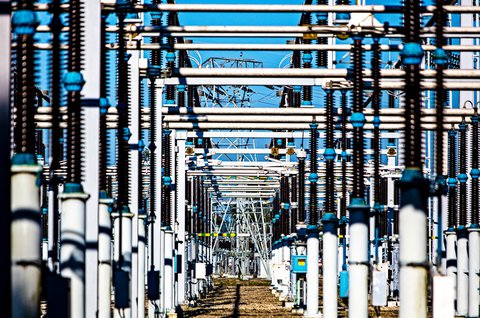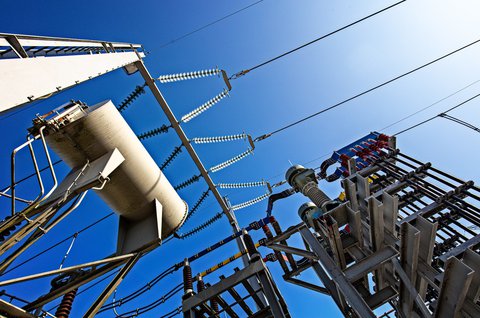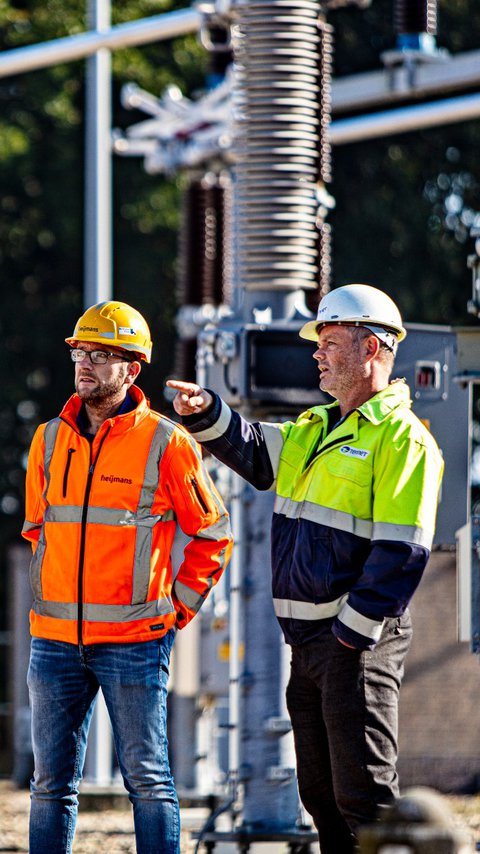
The fact that safety can sometimes put a strain on relations is something that Ingo Seuren of Heijmans and Douwe Zijlstra from TenneT can certainly attest to. When they were working together on the construction of a high-voltage substation in Meeden, a part of the project proved impossible to carry out safely and this threatened to disrupt the planning. They reveal how they agreed to return to the drawing board.
The steel pylons, pipelines and electrical wires of the high-voltage substation in Meeden, in the province of Groningen, glitter in the autumn sun. This is one of the hubs in the country’s electricity supply. To increase the capacity of the power grid, TenneT is currently working on a major expansion and renewal programme involving the Meeden substation and the roughly 360 other substations around the country. They have signed an EU-303 framework agreement with nine selected partners, including Heijmans, and they want to build lasting relationships with these partners to complete this huge project.
For Ingo Seuren from Heijmans and Douwe Zijlstra from TenneT, this partnership was something of a long-distance relationship: as technical manager for the Cable and Pipeline systems business unit, Ingo made regular trips to Groningen from Limburg. “Heijmans is the system integrator for this substation. We are coordinating the (design) operations between us and other players, such as Smit Transformatoren and Enexis. Heijmans is building various facilities for the transformers and is responsible for security and coordination, making sure that everything works the way it’s supposed to.” For Groningen native Douwe, the project is just around the corner. One of his many tasks as project leader is ensuring smooth cooperation between the various contract partners.
Safety first
And their relationship was put to the test very early in the project, says Ingo: “The location laid down in TenneT’s initial design proved to be too small to execute the project.” Pointing at the transformers, Douwe outlines the assignment: “Heijmans was supposed to build three transformer cells here. This includes the foundations and the protective walls around the transformers. The walls prevent shrapnel from flying around if a transformer explodes, plus they act as noise barriers against the monotone hum of the transformers.”
The cells also include portals for the roof network and the conductors: “The roof network transports electricity from the transformers to the high-voltage pylons. So that’s all high-voltage of 220 kV”, Ingo explains. “For safety reasons, you have to work four metres below the roof network to avoid anyone getting electrocuted.”

Lack of space
And they found that space simply wasn’t there. The location of the underground cables and pipelines also made it difficult to install the transformer cells. This would require the relocation of the entire underground infrastructure. Douwe: “But you can’t simply switch off the entire substation to carry out the project, as that would leave a lot of people without power.”
On top of this, the lack of space would also have made it impossible to maintain the substation safely in the future, adds Ingo. Because maintenance is subject to the same safety rules. The conclusion: to guarantee the power supply, ensure safety and facilitate future maintenance, they would have to make a number of changes. This meant going back to the drawing board for a new and safe design for one of the transformer cells, and making some practical adjustments to the other two cells.
3D model
Although Douwe and Ingo were in agreement, they still had to take the next hurdle: put the changes to the other decision makers in the Meeden project. After all, everyone had to agree to a new design. To make the situation clear to everyone, Heijmans proposed making a 3D model. Douwe agreed, because “this kind of decision has a lot of consequences, so we had to provide solid evidence for the changes. And yes, that takes time, but safety is also one of TenneT’s core values.”
Once Heijmans had produced a clear picture of the current situation using a point cloud, ground radar and by digging test ditches, they had all the ingredients they needed for a 3D model (see image). Heijmans combined all these ingredients and added all the data they had on the underground infrastructure, the planned transformer cells, and the safety zones around the roof network and other conductors.

Tools
“The 3D model was a major help, given that everyone had the same information and the unsafe situation was clear”, says Douwe. “This was especially useful for online meetings. I’ve no idea how we’d have done this with paper drawings.”
Despite this, the discussions were still pretty heavy, as certain conditions were under pressure, such as the operational deadline. One TenneT manager cast the deciding vote, says Ingo. “The 3D model made it clear to him that future maintenance of the substation would not be safe and that it was wasn’t safe to build the protective wall.” And nobody wanted an accident on their conscience”, adds Douwe. “Everyone at the table felt responsible for safe working conditions. If safety is under threat, you have to take another look at the planning.”
Although the 3D model helped move the discussions along, Douwe stresses the importance of having everyone involved at the table. “Everyone was aware that we had to do this together and we all respect each other’s interests and choices.” And it helped that there was no real opposition or finger pointing, says Ingo. “People really listened and everyone felt safe speaking out. You could say what you felt and nobody was under pressure to make unwanted choices. I’ve been in situations when that certainly wasn’t the case!”
If safety is under threat, you have to take another look at the planning
Respect
The two men say that this openness is quite unusual at the start of a partnership. “You generally have to feel each other out, as you’re new to each other”, says Douwe. “But if you’re open and transparent with each other, you grow to trust each other.” Ingo: “Of course, we’re still people. The 3D model gave the discussions another dynamic and pointed everyone in the same direction. That was an investment made by Douwe and his team. They saw the added value. And it laid the ground for a good discussion about safety.” That was a really good choice on Heijmans’ part, Douwe agrees. “Not only can we now build the transformers safely, we’re also guaranteeing safe working conditions for the maintenance company in the future.”
Both men are always keen to share their experiences within their own organisations, because there’s no doubt in their minds that colleagues can learn from these experiences. Although Ingo was busy with the completion of the design phase, he thought it was important to share this story with as many fellow professionals as possible. “In the end, safe working conditions boils down to open and healthy discussions on the subject.” No matter how the partnership develops, the relationship is based on safety as a shared value.










